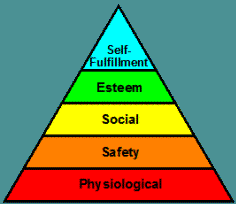It is common for competitive athletes to train at high altitudes because of the decreased amount of oxygen in the air. They believe that it will provide an advantage when returning to sea level. This is why the US Olympic Team has their main training center in Colorado Springs, CO, which has one of the highest altitudes of any major US city. Several different machines have been developed to try to mimic the training in Colorado Springs, but they are unaffordable for most athletes. A newer company, Training Mask, has developed their own product for athletes that is much more affordable (they usually sell for around $100).
In the last few years, these altitude-training masks have become more and more popular. On their website, Training Mask says that, along with making your workout more efficient, it will “increase your stamina and ability to go harder at your sport.” At first glance, it makes sense, but I’ve done some digging and found out that maybe it’s not worth the money. 
An observational study from Texas Tech University analyzed the Training Mask in seven NCAA runners. These subjects took performance tests before and after four-weeks of training using this mask. They essentially failed to reject the null hypothesis that the masks help with stamina and endurance. The subjects had greater respiratory muscle strength, but this only means that they could breathe “harder.” It did not change the maximum amount of oxygen absorbed during running, which is what is actually important when exercising and what increases muscular endurance. The major limitation of this study is the fact that there wasn’t any sort of control group. Researchers at Arizona State fixed the second problem, studying nine cyclists and having a control group. Their results were very similar. A limitation shared by the two studies is small sample size, but I think we can ignore this because the results were so significant and similar. Another possible reason for no increase in endurance during their respective sports is the time frame. Both studies only gave the subjects 3-4 weeks with the masks. What would have happened if they had 10-15 weeks? It would be interesting to see if the results would differ.
I had a hard time finding many credible trials regarding Training Masks. This could be largely due to the file drawer problem. Training Mask’s website shows a few studies supporting their product, but it’s hard to know their credibility due to bias.
Many people misunderstand these altitude-training masks. Yes, they are good for strengthening your respiratory muscles (i.e. how hard you can breathe). This, however, shouldn’t lead to an increase in performance. According to runnersconnect.net, “the main problem isn’t usually getting air into your lungs anyways—it’s getting oxygen from the air into your blood, and then putting that oxygen towards a useful purpose in your leg muscles.” Athletes train at altitude because the air has less oxygen, but these masks do not actually limit the amount of oxygen in the air you inhale. Instead, they just make it harder to breathe. This forces you to “suck” in the air, potentially running the risk of poor breathing habits due to the mask.
Overall, there is no major evidence that supports the use of the training mask for sports; however, there is no evidence showing that it is “bad” to use. Of course, some will train harder because they feel like Bane when wearing it, but for most, it doesn’t seem like it’s worth the money.




 According to
According to 







